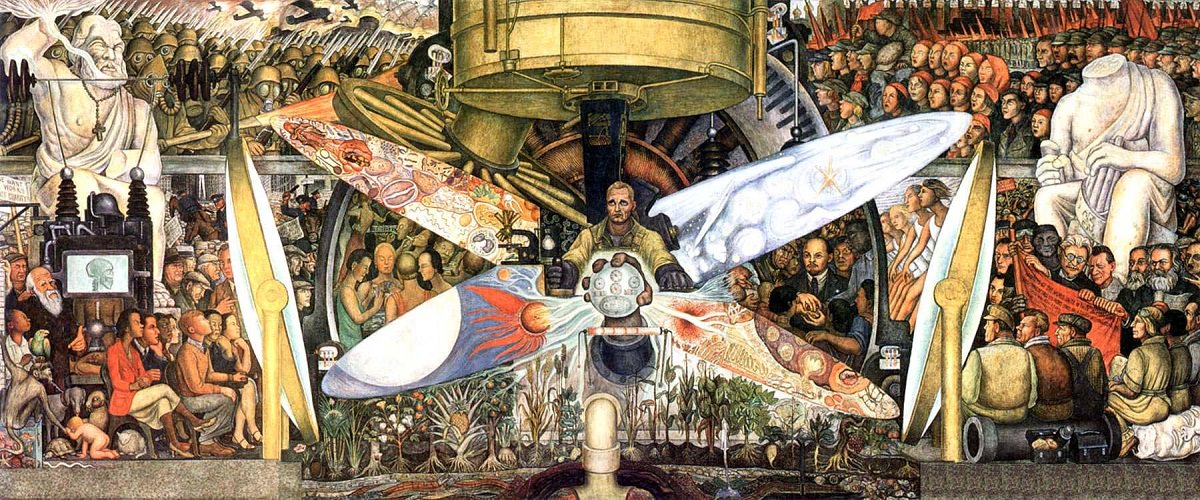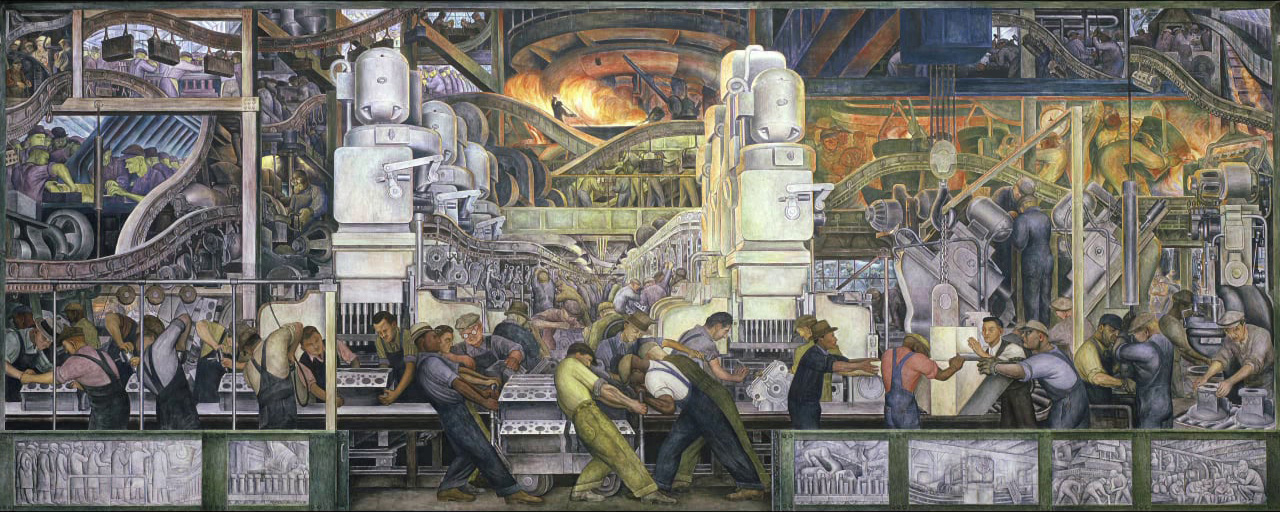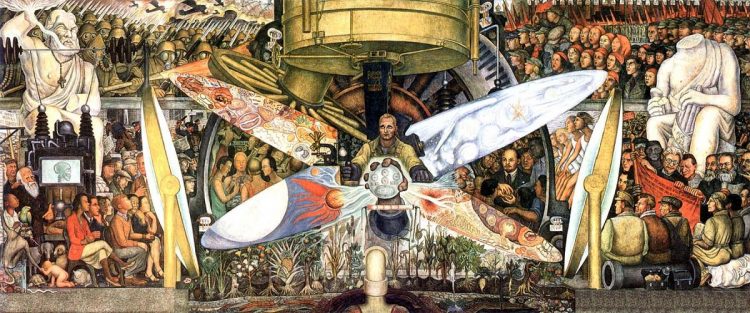
Diego Rivera art work is widely regarded as some of the most ground-breaking and exceptional Mexican art ever produced. Rivera is perhaps best known for his murals which portrayed the challenges faced by the working class of the country, though he is also famed for his troubled relationship with Frida Kahlo, who was also a groundbreaking artist.
Rivera was born on the 8th of December 1886 in Guanajuato. His father was also called Diego Rivera and was a health inspector, teacher and newspaper editor. His mother was a doctor. Rivera’s twin brother passed away at the age of one. He began drawing at the age of three and also had a keen interest in machines and trains.

The artist began studying at Mexico City’s San Carlos Academy of Fine Arts at the age of just 10. In 1902, he was expelled for playing a pivotal role in a student protest. Following a period of travel around Mexico, he was sponsored by Veracruz Governor Teodora A. Dehesa to make his way through Europe and continue studying. During his travels, he was heavily influenced by a series of Impressionist and Cubist artists. He became noted for his versatility and was able to work in styles including Flemish, Impressionist, Post-Impressionist, and Cubist.
His decision to create vast murals resulted from his wish that everyone should be able to see his art, regardless of their social status. The Diego Rivera art mural creation is seen as one of the 20th century’s most notable and was commissioned by the government. He is regarded as one of the Big Three of Mexican art alongside Jose Clemente Orozco and David Alfaro Siqueiros and kickstarted the artistic movement Mexicanidad, in which 3D elements were flattened into 2D elements and objects were portrayed as broader than they were in real life.
Though Rivera married four different women, his best-known marriages were both to Kahlo, whom he divorced in 1939 after his infidelity with her sister and remarried in 1940. However, both had relationships with other people, even during their second marriage. He married Kahlo in 1929 when she was aged 22 and he was 42, though they had met before, with Kahlo reportedly announcing to a friend that she would go on to marry the artist. Kahlo died in 1955, with Rivera marrying his agent Emma Hurtado the next year. Kahlo and Rivera had two daughters, and both artists had several affairs. His late wife would go on to become much more well-known and respected after her death.

Rivera was a passionate atheist. The Diego Rivera art work Dreams of a Sunday in the Alameda featured a sign that read “God does not exist”, which meant it was not shown for some nine years. It was only made public after Rivera gave in to pressure and erased the message. He described religion as “a form of collective neurosis”. He was even a member of the occult organisation Ancient Mystical Order Rosae Crucis or AMORC at one point but later said, as a passionate communist, he only joined to infiltrate a “Yankee” organisation. The artist created frescos for the National School of Agriculture auditorium in the mid-1920s. These are widely agreed to be his best works and were themed upon biology and social development.
Some of the most revered Diego Rivera art works include Man at the Crossroads (1934), the Detroit Industry Murals (1932-33), The History of Mexico (1929-35), Agrarian Leader Zapata (1931), Creation (1932), The Flower Carrier (1935) and Fertile Land (1924-27). Man at the Crossroads was commissioned for New York City’s Rockefeller Center, but it could not be completed due to Rivera’s refusal to remove a controversial portrait of Lenin. After it was destroyed, he created an almost identical version of the mural at Mexico City’s Palacio de Bellas Artes, where it was rebranded as Man, Controller of the Universe. The piece juxtaposed the wealthy and a racially diverse set of workers holding hands with Lenin. It also features shapes representing innovations brought about by science and is regularly cited as the most important Diego Rivera art work.
Diego died a couple of years after Kalho, on the 24th November 1957 in Mexico City. Though his work was seen as hugely controversial during his lifetime, it is highly- regarded and revered by a wide range of art critics today. Rivera has even been portrayed in movies, including Cradle Will Rock and Frida, the 2002 film about his former wife.

